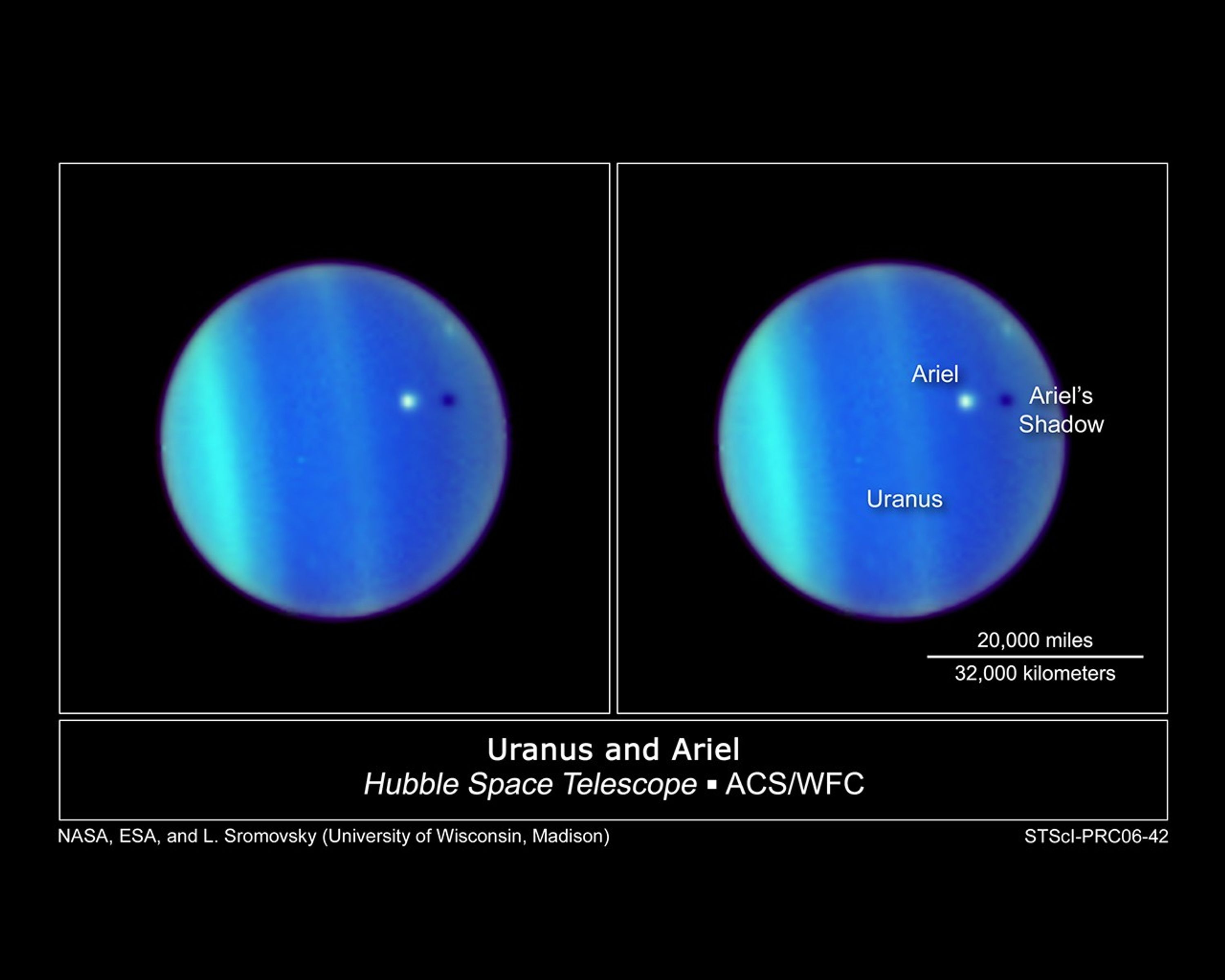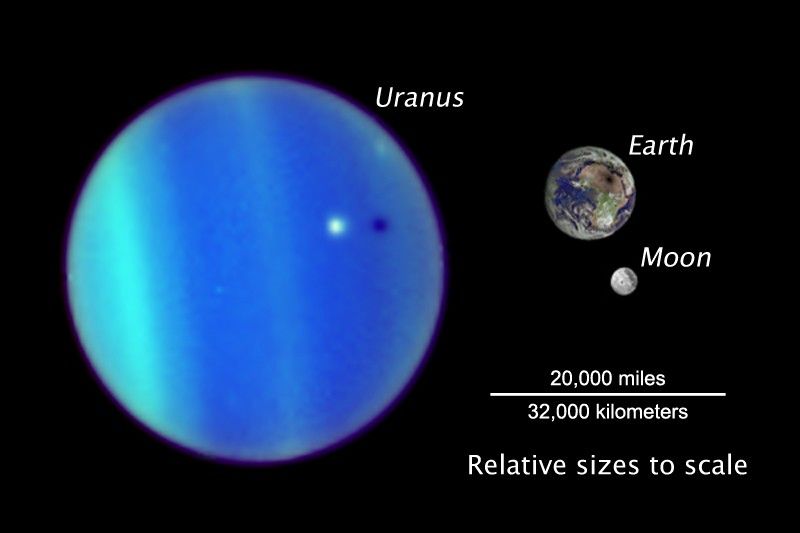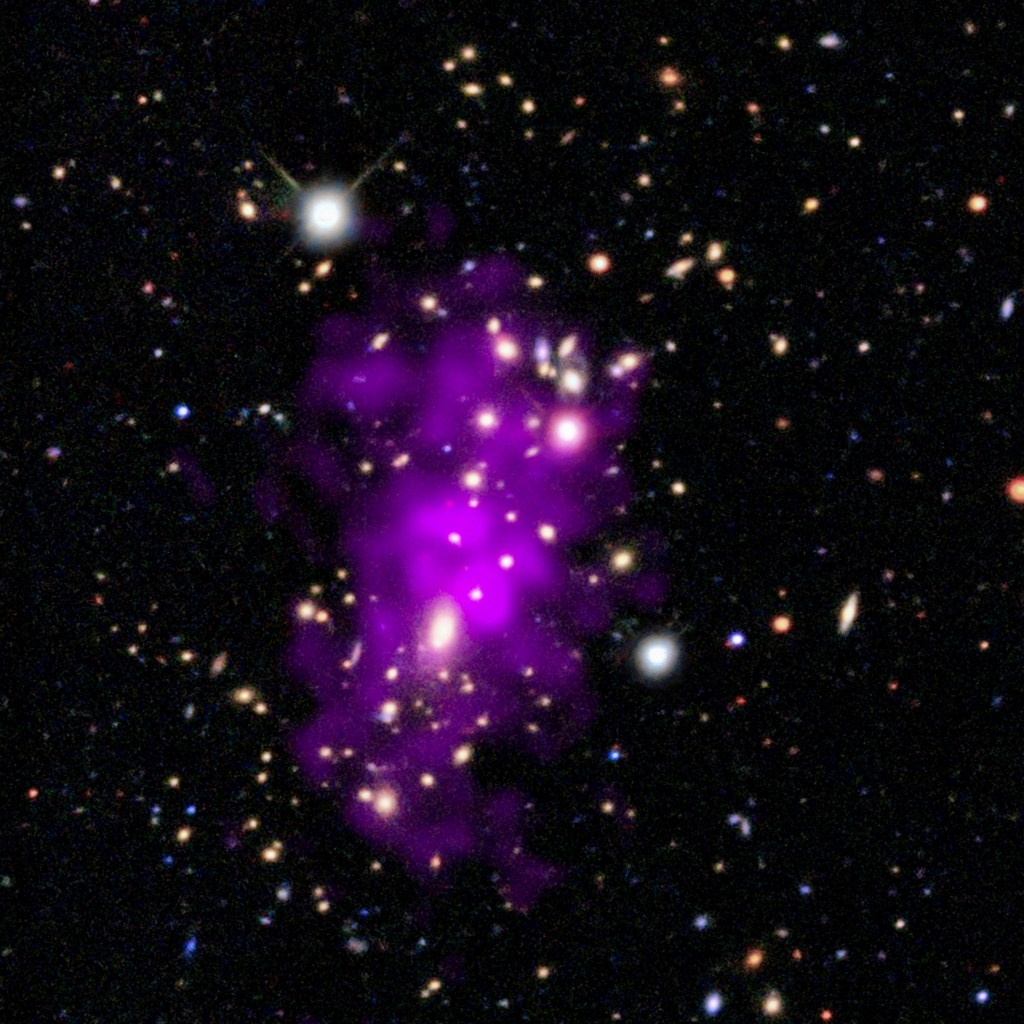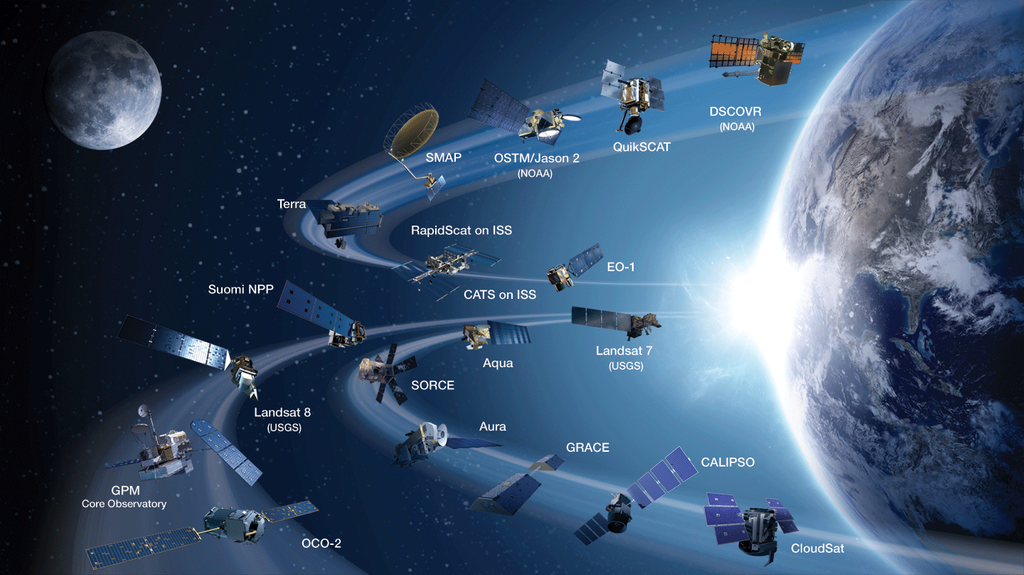1 min read
Uranus and Ariel

This image is a never-before-seen astronomical alignment of a moon traversing the face of Uranus, and its accompanying shadow. The white dot near the center of Uranus' blue-green disk is the icy moon Ariel. The 700-mile-diameter satellite is casting a shadow onto the cloud tops of Uranus. To an observer on Uranus, this would appear as a solar eclipse, where the moon briefly blocks out the Sun as its shadow races across Uranus's cloud tops.
Though such "transits" by moons across the disks of their parents are commonplace for some other gas giant planets, such as Jupiter, the satellites of Uranus orbit the planet in such a way that they rarely cast shadows on the planet's surface. Uranus is tilted so that its spin axis lies nearly in its orbital plane. The planet is essentially tipped over on its side. During the course of its orbit around the Sun, first one pole and then the other is alternately illuminated. As a result, Uranus has extreme seasons during its 84-year orbit around the Sun. The moons of Uranus orbit the planet above the equator, so their paths align edge-on to the Sun only every 42 years.
This transit has never been observed before because Uranus is just now approaching its 2007 equinox when the Sun will shine directly over the giant planet's equator. The last time a Uranian equinox occurred, when transits could have been observed, was in 1965. However, telescopes of that era did not have the image sharpness required to view satellite transits on Uranus. When Hubble was launched in 1990, the Sun was shining over Uranus's far northern latitudes. Over the past decade Hubble astronomers have seen the Sun's direct illumination creep toward equatorial latitudes and the moons' orbits approach an edge-on configuration.
Ariel, named for a mischievous airy spirit in Shakespeare's "The Tempest," is only one-third the size of Earth's moon. Ariel is the nearest large satellite to Uranus. As Uranus approaches equinox, there will be additional eclipses by the large moons Umbriel, Titania, and Oberon, and by many smaller moons.
Lawrence A. Sromovsky of the University of Wisconsin-Madison, Heidi B. Hammel of the Space Science Institute, Boulder, Colorado, and Kathy A. Rages of the SETI Institute, Mountain View, California, created this color composite image from images at three wavelengths in near infrared light obtained with Hubble's Advanced Camera for Surveys on July 26, 2006.
About the Object
- DistanceDistanceThe physical distance from Earth to the astronomical object. Distances within our solar system are usually measured in Astronomical Units (AU). Distances between stars are usually measured in light-years. Interstellar distances can also be measured in parsecs.The semi-major axis of Uranus's orbit about the sun is 19.18 Astronomical Units (A.U.) or roughly 2.9 billion km.
- DimensionsDimensionsThe physical size of the object or the apparent angle it subtends on the sky.Uranus (without rings) has a diameter of roughly 32,000 miles (51,000 km) at the equator.
About the Data
- Data DescriptionData DescriptionProposal: A description of the observations, their scientific justification, and the links to the data available in the science archive.
Science Team: The astronomers who planned the observations and analyzed the data. "PI" refers to the Principal Investigator.This image was created from HST data from the following proposal 10805: PI: L. Sromovsky (University of Wisconsin, Madison), H. Hammel (Space Science Institute), and K. Rages (SETI Institute). - InstrumentInstrumentThe science instrument used to produce the data.HST>ACS/WFC
- Exposure DatesExposure DatesThe date(s) that the telescope made its observations and the total exposure time.July 26, 2006
- FiltersFiltersThe camera filters that were used in the science observations.FR782N at 750nm, 770 nm, and 790 nm
- Object NameObject NameA name or catalog number that astronomers use to identify an astronomical object.Uranus
- Object DescriptionObject DescriptionThe type of astronomical object.Planet
- Release DateAugust 31, 2006
- Science ReleaseHubble Captures a Rare Eclipse on Uranus
- Credit

This image is a composite of many separate exposures made by the ACS instrument on the Hubble Space Telescope. A single ramp filter was used to sample several wavelength ranges. The color results from assigning different hues (colors) to each monochromatic image. In this case, the assigned colors are: Blue: FR782N (750 nm ) Green: FR782N (770 nm) Red: FR782N (790 nm)

Related Images & Videos

Uranus as Viewed from Earth – 1994, 1997, 2006
This diagram shows how the inclination of orbits of Uranus' moons have appeared increasingly more oblique over the past 12 years due to Uranus's orbit about the Sun. Hubble Space Telescope has been watching Uranus over that period and has traced, in detail, our changing view of...

Uranus/Ariel – Earth/Moon Size Comparison
This illustrates the relative sizes of Uranus, Earth and Earth's Moon. The images are shown at the proper relative size, but not the correct relative distance from each other. Uranus is approximately 31,000 miles (50,000 kilometers) in diameter, or about four times the size of...
Share
Details
Claire Andreoli
NASA’s Goddard Space Flight Center
Greenbelt, Maryland
claire.andreoli@nasa.gov
































